Endemism
In ecology, endemism is the state of being unique to a defined geographic location, should it be a country, a mountain range or even just a small island, or lake. This year, many of us have been in tears knowing that the endemic fauna and flora of Australia underwent massive destruction.
Let’s dive into the world of some of the most interesting endemics that live on our planet. Some of them will be cute and all, but the others… well, let’s just say you’ll be happy to be far away from them.
While uniqueness adds on a species‘ appeal to humans, it also, sadly, adds on its vulnerability. Endemic species, especially those tied to a certain habitat type that only spans across a small range, can easily go extinct should anything happen to their habitat.
Take for instance the Kuranda tree frog (Litoria myola), a critically endangered frog that is found only by the Barron river of Kuranda, Myola, Kowrowa and Oak Forest in Far North Queensland, Australia. It is only known from 12 discrete breeding aggregations, all within the area of 13.5 km², while its area of occupancy is estimated to be only 3.5 km².
Kuranda tree frogs prefer thick riparian forests, and the males of this species have rarely been observed away from the stream. Because of this, we can say that vegetation clearance and hydrological disturbances could lead to the species' demise.
Their population size is estimated to be around 700 mature individuals. As I mentioned above, their population is divided into 12 distinct breeding aggregations, which means that the 12 groups are not in contact. Habitat fragmentation is, thus, another factor that could lead to the extinction of the species.
You should know that not all endemics are rare, and not all of them are doomed, of course. Even the Kuranda tree frogs like to mate... a lot. And the naturalists at Kuranda EnviroCare are doing a great job protecting the little randy amphibians.
Paleoendemism and Neoendemism
These two sub-categories of endemism offer an insight into the history of the studied endemic species.
Once widespread, paleoendemics today live in restricted ranges today. Paleoendemism is often referred to as relict endemism, meaning that paleoendemics are less widespread today than they were in the past. Neoendemics, on the other hand, are such organisms that have recently arisen, freshly branched-off the evolutionary tree, and are restricted to a particular area simply because that’s where they started their evolutionary journey.
PaleoendmismThe genus Hillebrandia includes a single species, Hillebrandia sandwicensis, locally named aka ʻaka ʻawa and puʻa maka nui. It can only be found on some of the Hawaiian Islands. It belongs to the family Begoniaceae, and it’s the only species of the family not to be included in the genus Begonia, which includes over 1,800 species (2). The split of Hillebrandia from the rest of the family is dated to have occurred some 50 million years ago. That wouldn’t be weird if the oldest above-water island in Hawaii, the Kure Atoll, wasn’t “only” 29 million years old. This means that the species formerly inhabited islands that are now completely underwater and successively colonized the existing islands on which it now occurs. More recent research (Shaefer et al.) has, however, shown that the evolutionary divergence of the species occurred a "little" later - about ca. 29 million years ago. Sadly, fossils are hard to find on eroding islands.
NeoendemismMy favorite neoendemics are the result of an adaptive radiation famously described by Charles Darwin – ‘Darwin’s finches”, or “Galápagos finches”; fifteen finch-like species in five genera of the large American family Thraupidae. The birds' beaks have evolved into many shapes and sizes as they adapted to the local conditions, a fenomenon known as character displacement, on the various islands on the Galápagos and 'filled' the available niches. This fenomenon was famously studied by ecology's favorite lovebirds - Rosemary & Peter Grant.
Deadly Endemics
Gloydius shedaonensis, also known as the Shedao pit-viper, is a highly venomous snake only found on the island of Shedao, about 13 km away from mainland China. With an area of about 0.63-0.73 km², the small island is the only home of these rather unusual natives, and they're the only species of snake found there. Believe me, you wouldn't wanna be there either.
These pit-vipers live in extremely high densities. It has been estimated that as many as 11,500 individuals live on the island, and that there’s at least one for each square meter in some areas. Sadly for the snakes, though, not much food can be found on the island, at least not year-round. How do they survive there, then, and in such quantities?
Ectotherms have the ultimate advantage of not having to eat constantly. They nom on something and may rest for weeks or even months after that thanks to their slow metabolism.
The snakes on Shedao mostly only eat in May and September because those are the two months when migrating birds visit the island – on their way to the wintering grounds and on the way back. Stopping on this island turns out to be the worst decision of their life, however, as thousands of venomous snakes wait for their arrival, ready to attack.
The horror!
The smallest birds that visit the island are about 9-10 cm long, about the size of a Eurasian wren (Troglodytes troglodytes). This is quite some size for a young snake! Since snakes do not rely on parents to feed them, young snakes must be big enough to eat when their first potential food arrives. Actually, other species of the genus Gloydius have much smaller young, but females of those species lay more eggs. This is a typical example of a trade-off in ecology and evolution: one can either have a lot of small offspring or a few large ones because of some physiological constraints.
Young Shedao pit-vipers are more likely to wait for their prey on tree or shrub branches, where it’s easier to successfully ambush the incoming birds, whereas older snakes usually wait on the ground. Even after they’ve eaten, the snakes will remain waiting in a concertina shape, ready to attack another unsuspecting bird.
An interesting hypothesis aims to explain how these snakes survive in such high densities:
The unsuccessful attack of a young snake often translates into a win for an older one. Those birds that had been struck but not eaten (as a result of an unsuccessful attack by a young snake) are often found on the ground and eaten by older snakes. Adult Shedao pit-vipers are dangerous even for humans, and their only predators are some hawks which also only have the balls to attack the young ones, since larger snakes may easily kill them. Older snakes are known to kill large birds that don’t pose threat to themselves, hence protecting the young ones. According to Shine et al., this may be a form of “accidental altruism” that allows these snakes to thrive in high densities.
So, when are you visiting Shedao?
Microendemism - The Case of New Caledonia
Just like the Kuranda tree frog mentioned above, many other species are microendemics, meaning that their range is restricted to an extremely small area. This is nothing rare, but exceptional cases of microendemism are possible on islands. These isolated geographical units are always exciting for ecologists to study, as one can come across such ecological situations that would, perhaps, be impossible on continents. This brings us to New Caledonia, a hotspot of biodiversity in the South Pacific and the oldest oceanic island on Earth.
New Caledonia consists of the main island of Grande Terre, the Chesterfield Islands, the Loyalty Islands, the Isle of Pines, the Belep archipelago and some remote islets, and hosts about 1,149 species, 86% (982) of which are endemic.
The islands and their environment seem to be highly heterogenous. Maram Ceasar et al. were able to determine the ranges of about 597 New Caledonian species. They found that 112 endemic species have ranges smaller than 5.2 km² and 38 species have ranges between 23 and 100 km², and that the same goes for non-endemics: 22% have ranges smaller than 5.2 km² and 8% have ranges between 23 and 100 km². This includes animals and plants.
Let’s see some examples!
New Caledonia is home to some of the most ancient forms of animals and plants. Amborella trichopoda is the only species of its genus, found only on Grande Terre. The plant’s family (Amborellaceae) is unique in that it’s phylogenetically a very basal (“primitive”) family of angiosperms, a sister to all other flowering plants (Angiospermae) that currently exist anywhere in the world.
The world’s only “parasitic gymnosperm”, Parasitaxus ustus, also lives in New Caledonia. It lacks own roots, so it’s always attached to the roots of another member of the same family (Podocarpaceae), Falcatifolium taxoides.
The kagu (Rhynochetos jubatus) is a large, strange bird of the family Rhynochetidae – its only survivor. To this day, the bird’s affinities remain largely a mystery, and it’s currently believed that the South American sunbittern (Eurypyga helias) is its closest living relative, with which it forms the order Eurypygiformes. The kagu is unique in several ways. It doesn’t fly, but it still has large wings, unlike most other flightless birds whose wings are fairly reduced. The bird just doesn’t have the muscles that would allow it to fly. It has, however, something that no other bird on Earth has - nasal corns that cover the bird’s nostrils, possibly to protect it from dust that could enter its respiratory system while probing the soil for food.
New Caledonia is also home to one of the world’s largest pigeons called the goliath imperial pigeon (Ducula goliath) or notou, and to one of the smartest corvids which uses tools, such as hooks, to forage, New Caledonian crow (Corvus moneduloides), also called the qua-qua.
And finally, you'll find Rhacodactylus leachianus, the New Caledonian giant gecko, which is the largest gecko on Earth, in the list on right.
Sadly, humans exploit this area. Manmade fires, open-cast nickel mining and the introduction of invasive species all take part in the decimation of New Caledonia’s biodiversity, making many of the endemics critically endangered.
Who's in this article?
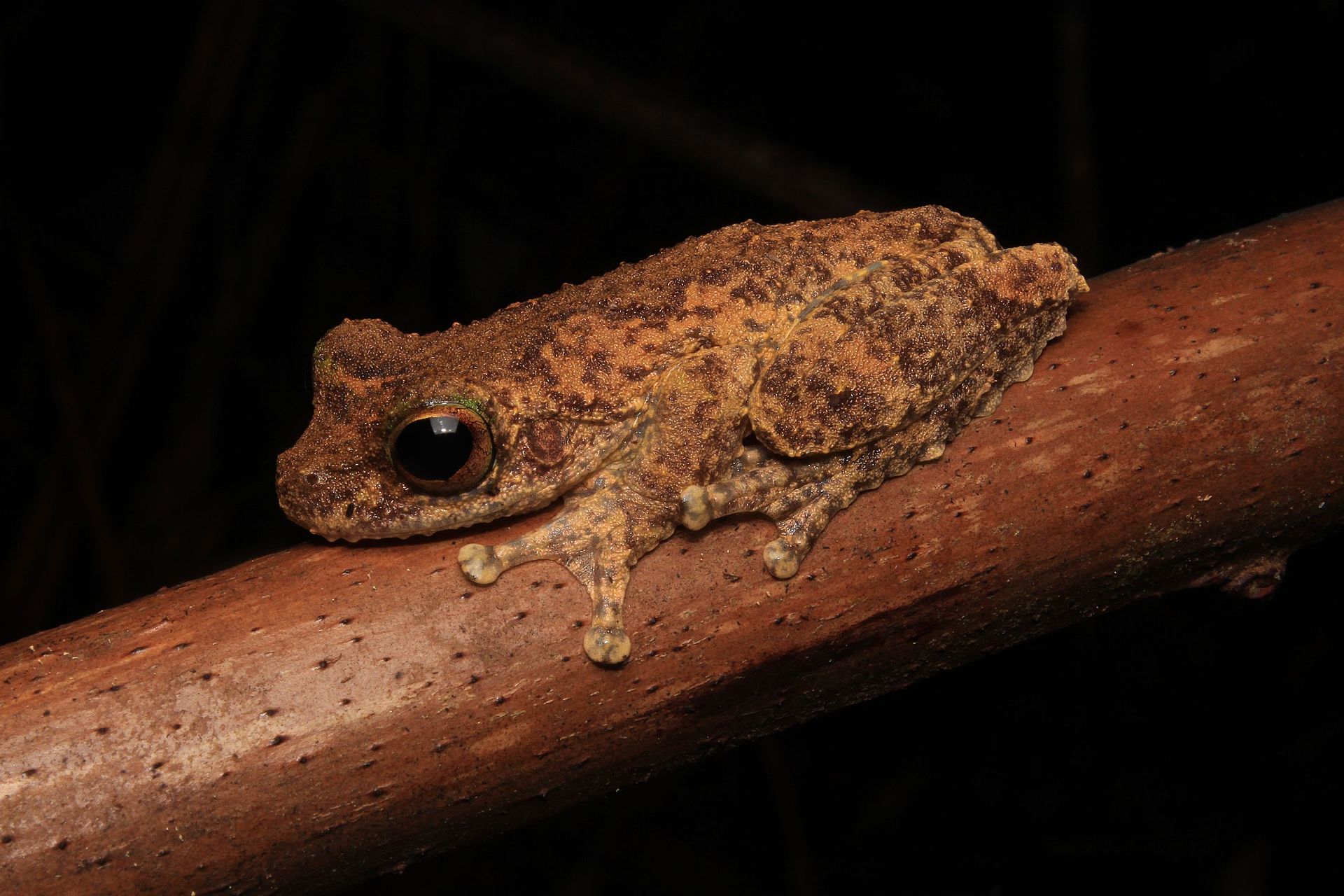
Photo credit: Sylvan herp
| Common name: | Kuranda tree frog |
| Scientific name: | Litoria myola |
| Phylum: | Chordata |
| Class: | Amphibia |
| Order: | Anura |
| Family: | Pelodryadidae |
| IUCN status: | Critically Endangered |
| Population trend: | Decreasing |
| Scientific reading: |
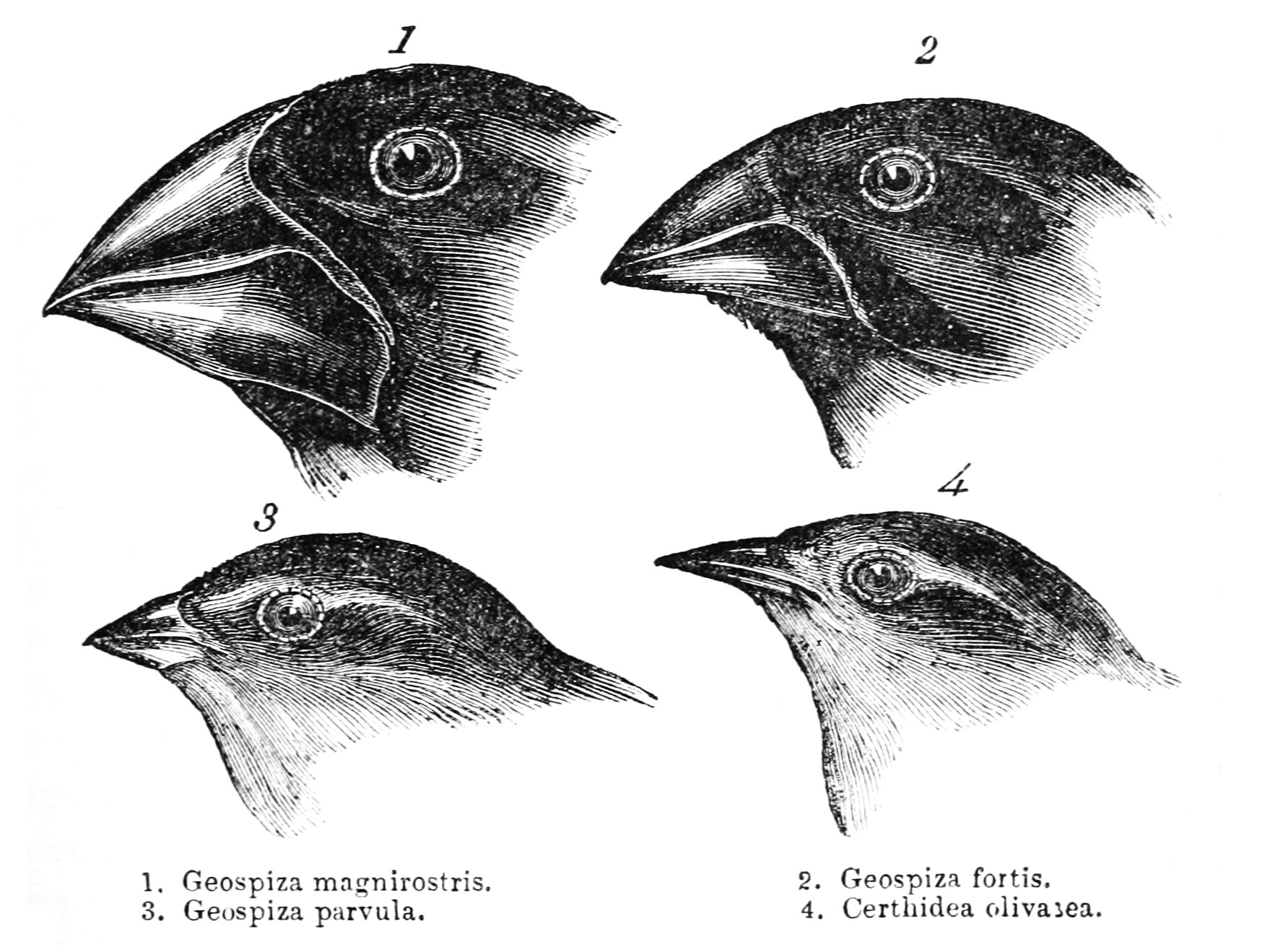
Photo credit: John Gould (Public domain)
| Common name: | Darwin's finches |
| Scientific name: | Thraupidae |
| Phylum: | Chordata |
| Class: | Aves |
| Order: | Passeriformes |
| Family: | Thraupidae |
| IUCN: | See taxonomy |
| Scientific reading: |
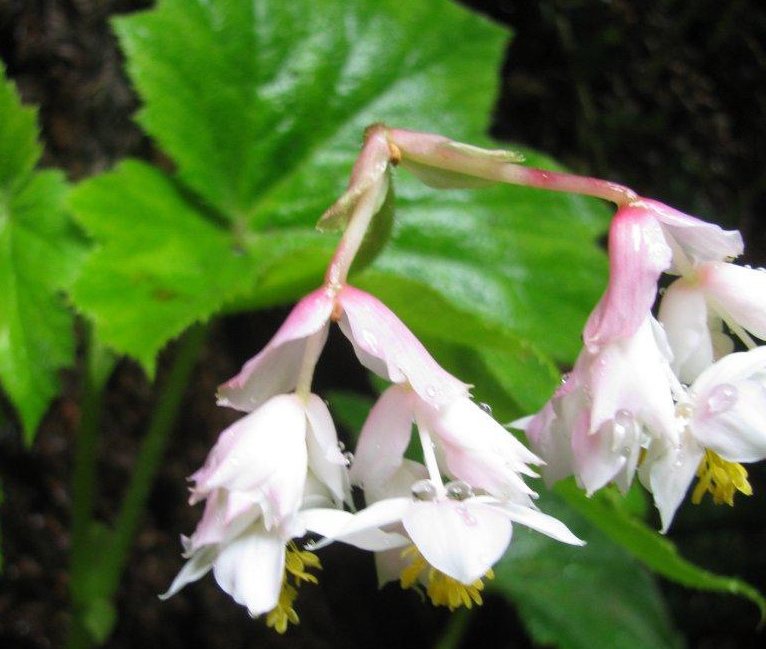
Photo credit: Forest & Kim Starr
(Cropped original: )
| Common name: | Hillebrandia sandwicensis |
| Scientific name: | Hillebrandia sandwicensis |
| Phylum: | Tracheophytes |
| Order: | Cucurbitales |
| Family: | Begoniaceae |
| IUCN: | N/A |
| Scientific reading: |
| Common name: | Shedao pit-viper |
| Scientific name: | Gloydius shedaoensis |
| Phylum: | Chordata |
| Class: | Reptilia |
| Order: | Squamata |
| Family: | Viperidae |
| IUCN status: | Critically Endangered |
| Population trend: | Decreasing |
| Scientific reading: |
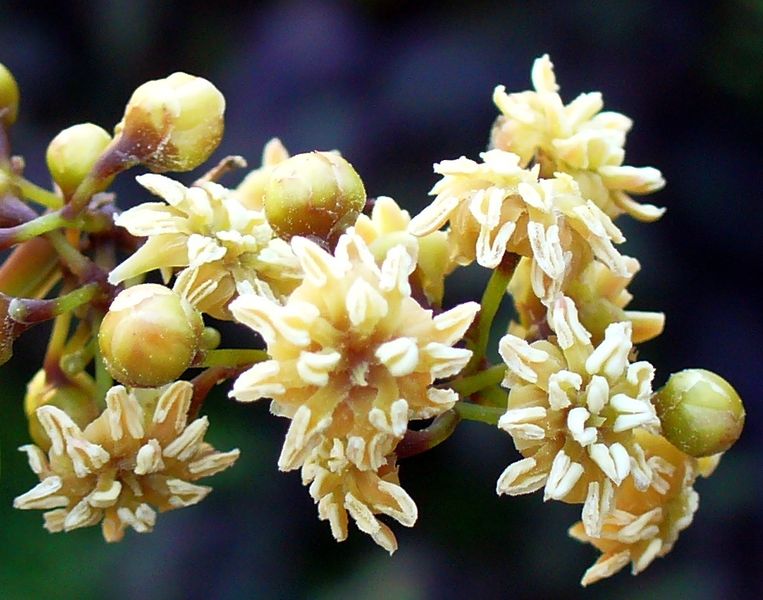
Photo credit: Scott Zona (close-up of: )
| Common name: | Amborella trichopoda |
| Scientific name: | Amborella trichopoda |
| Phylum: | Tracheophyta |
| Class: | Magnoliopsida |
| Order: | Amborellales |
| Family: | Amborellaceae |
| IUCN status: | Least Concern |
| Population trend: | Unknown |
| Scientific reading: |
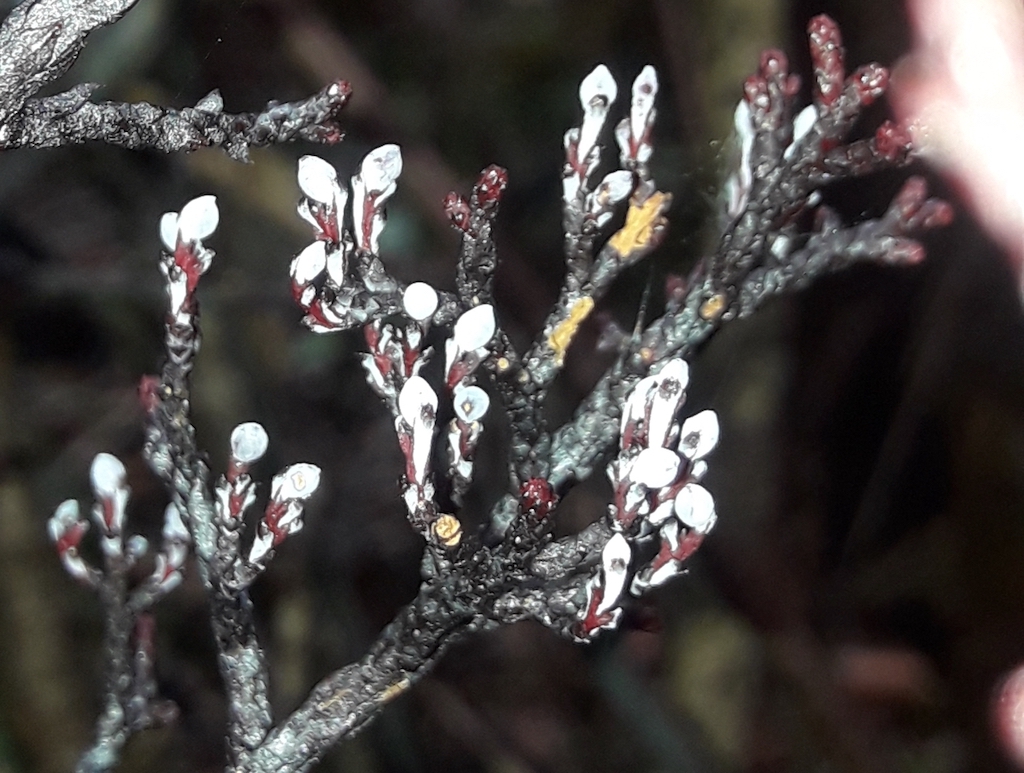
Photo credit: naturewatchwindow
(Fraction of the original)
| Common name: | Cèdre rabougri |
| Scientific name: | Parasitaxus ustus |
| Phylum: | Tracheophyta |
| Class: | Pinopsida |
| Order: | Pinales |
| Family: | Podocarpaceae |
| IUCN status: | Vulnerable |
| Population trend: | Decreasing |
| Scientific reading: |
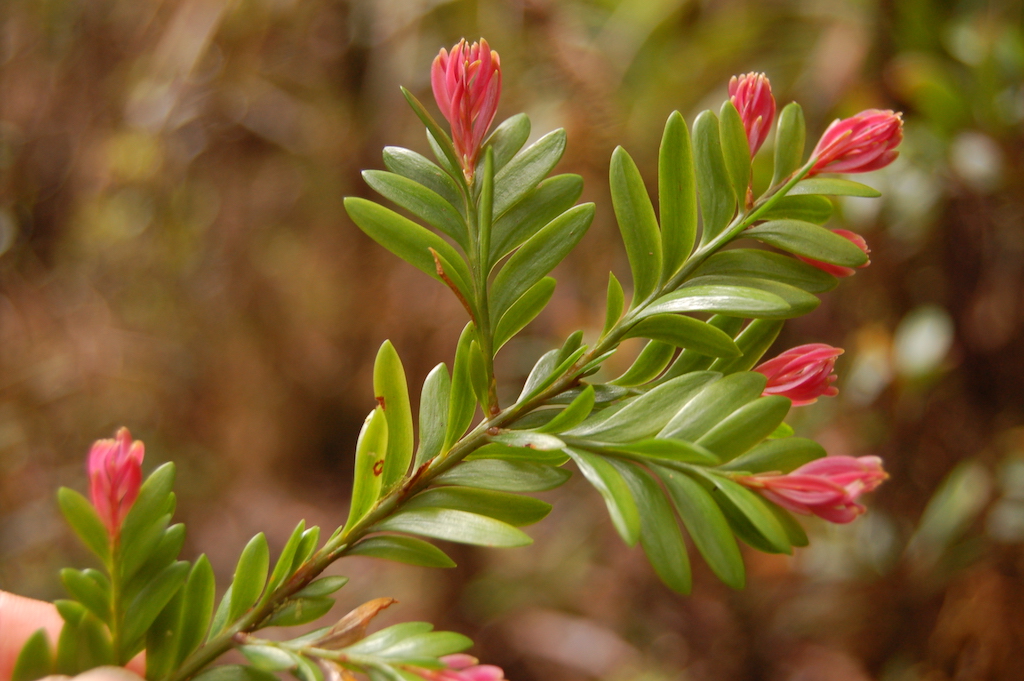
Photo credit: Tim Waters
| Common name: | Falcatifolium taxoides |
| Scientific name: | Falcatifolium taxoides |
| Phylum: | Tracheophyta |
| Class: | Pinopsida |
| Order: | Pinales |
| Family: | Podocarpaceae |
| IUCN status: | Least Concern |
| Population trend: | Stable |
| Scientific reading: |
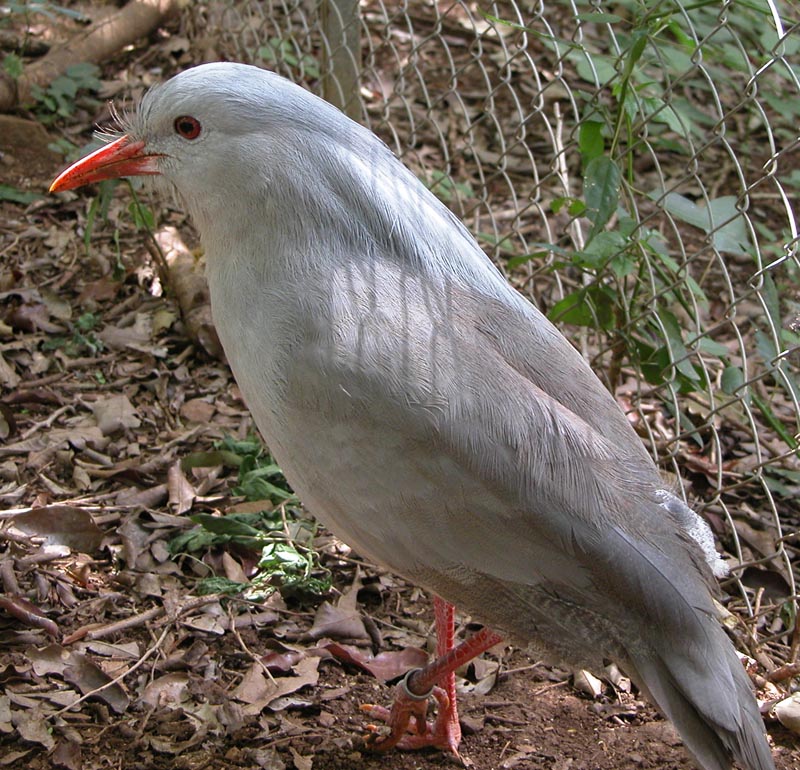
Photo credit: Scott Meyer (Public domain)
| Common name: | Kagu |
| Scientific name: | Rhynochetos jubatus |
| Phylum: | Chordata |
| Class: | Aves |
| Order: | Eurypygiformes |
| Family: | Rhynochetidae |
| IUCN status: | Endangered |
| Population trend: | Decreasing |
| Scientific reading: |
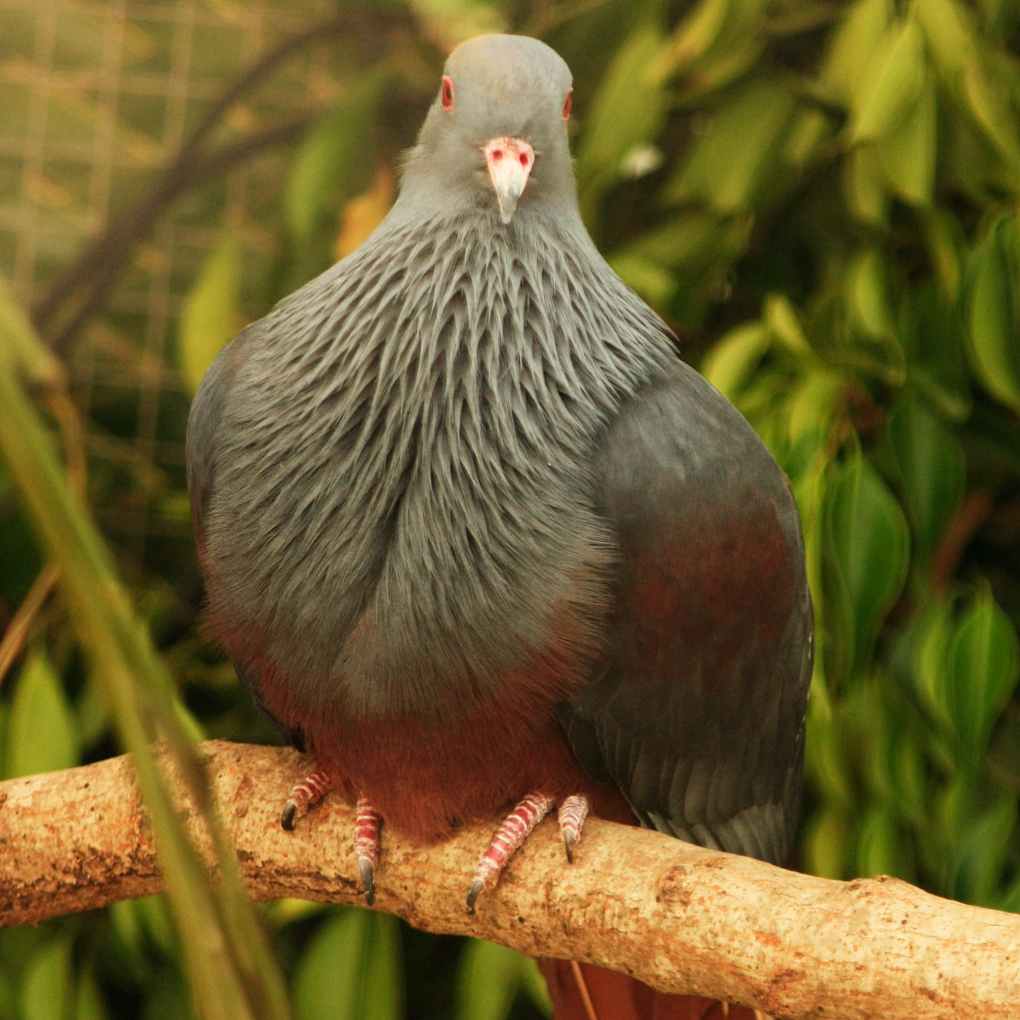
| Common name: | Goliath imperial pigeon |
| Scientific name: | Ducula goliath |
| Phylum: | Chordata |
| Class: | Aves |
| Order: | Columbiformes |
| Family: | Columbidae |
| IUCN status: | Near-Threatened |
| Population trend: | Unknown |
| Scientific reading: |
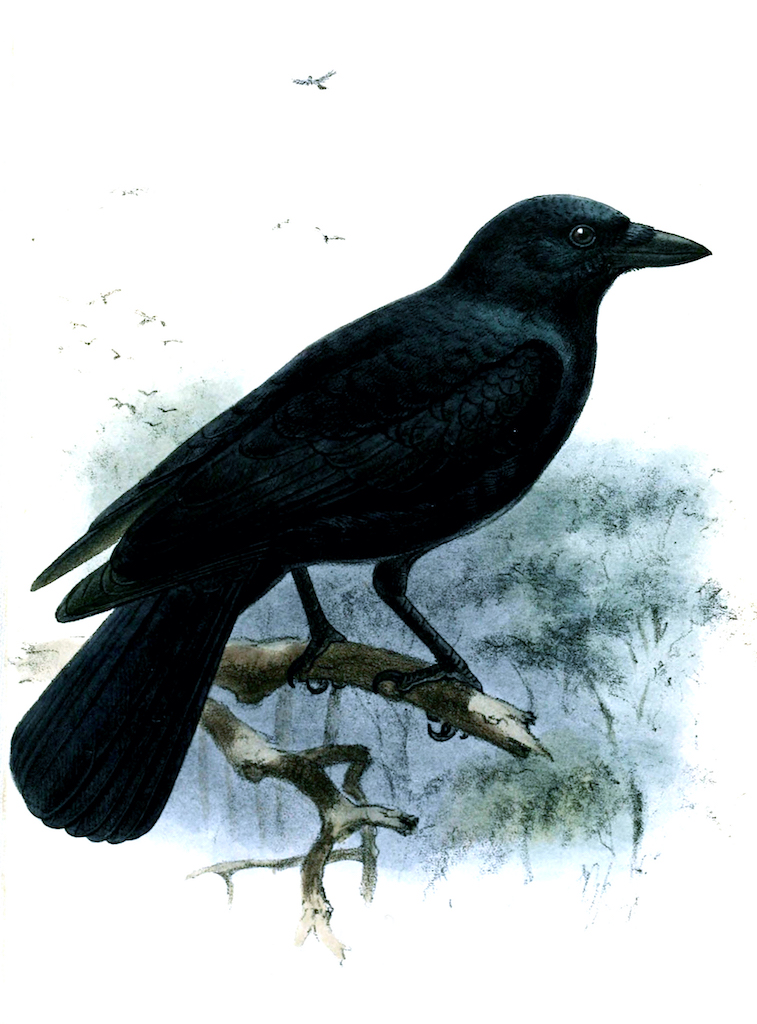
Picture credit: John Gerrard Keulemans
(Public domain)
| Common name: | New Caledonian crow |
| Scientific name: | Corvus moneduloides |
| Phylum: | Chordata |
| Class: | Aves |
| Order: | Passeriformes |
| Family: | Corvidae |
| IUCN status: | Least Concern |
| Population trend: | Stable |
| Scientific reading: |
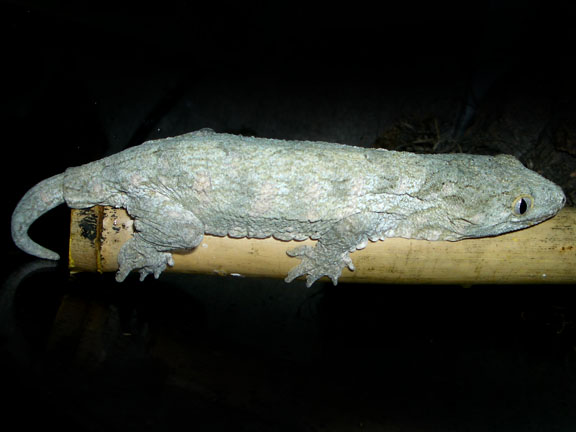
Photo credit: Alfeus Liman AKA Firereptiles
at en.wikipedia / Attribution
| Common name: | New Caledonian giant gecko |
| Scientific name: | Rhacodactylus leachianus |
| Phylum: | Chordata |
| Class: | Reptilia |
| Order: | Squamata |
| Family: | Diplodactylidae |
| IUCN status: | Least Concern |
| Population trend: | Stable |
| Scientific reading: |